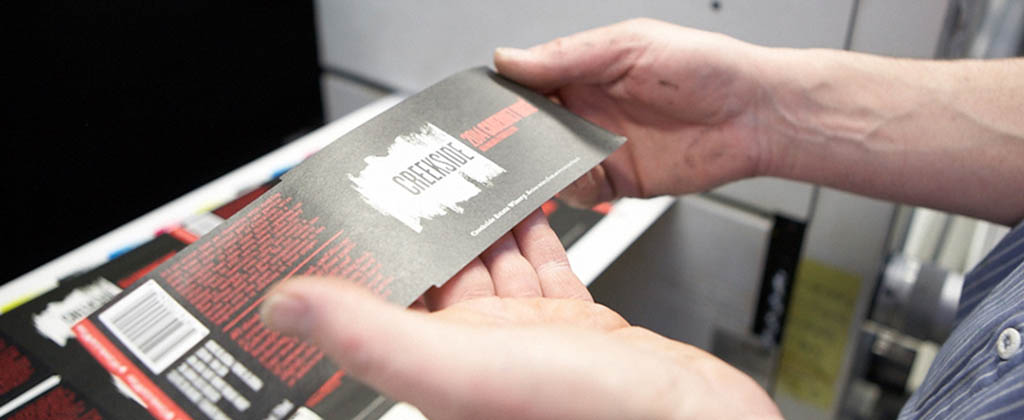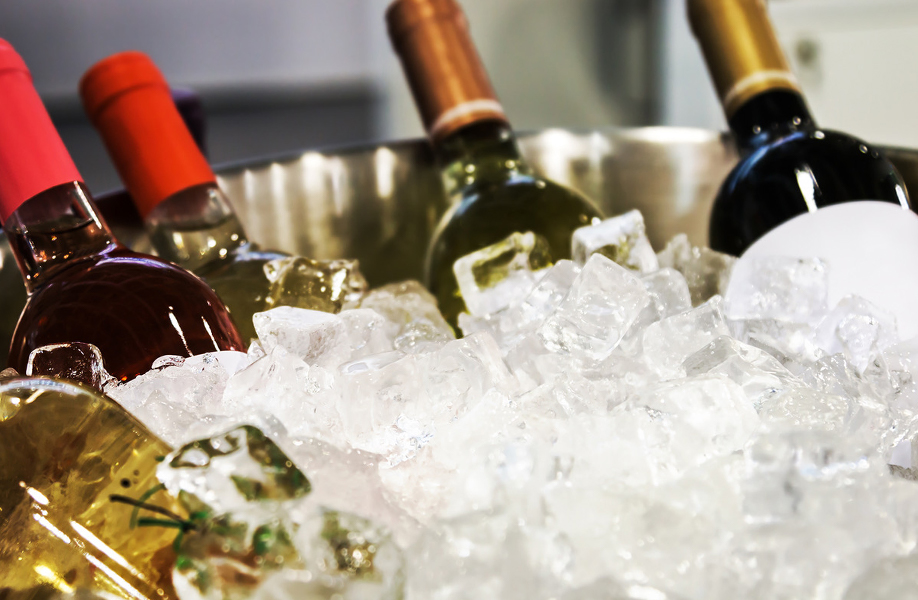Make sure your labels stick: How suppliers engineer adhesive solutions

When your brand has labels that aren’t sticking correctly, securely or long enough…
Wait, we’ll stop you right there. Label adhesives not performing? That’s not really an option.
You need pressure-sensitive labels that stick reliably — and your customers do, too.
So how can you guarantee that label adhesion problems won’t affect your products, your brand and your bottom line?
We’re going to pull back the curtain and discuss the questions your label supplier should ask before engineering an adhesive solution and explain why that information is important.
We’ll also share:
- How to prevent label adhesion problems
- Types of adhesives for pressure-sensitive labels
- Examples of advanced adhesive technology for complex labeling scenarios
- When it’s appropriate to test your label adhesive (and when it isn’t)
- Resources on label adhesive troubleshooting
Armed with this information, you can free up more time to brainstorm methods for driving sales online or design engaging product promotions — and put your label converter in the best position to engineer a dependable label adhesive for your products.
How to prevent label adhesion problems
Simply put, a robust conversation with your label converter will head off the majority of label adhesion problems.
Here’s what that conversation should look like (and why the information exchanged is important to the success of your adhesive).
They will learn every detail of your container and label vision by asking:
- Will your label be permanent or removable? If the latter, does it need to be repositioned? How long must it be removable? This will affect the basic formulation of the adhesive.
- What facestock is your label? Only certain adhesives work on certain face materials.
- Is your container’s surface smooth, or textured and porous? Smooth metals, glass and high surface energy plastics provide an excellent surface for labels to stay put. Textured surfaces, on the other hand, reduce the amount of surface area available for the label to adhere to, while porous surfaces absorb more of the adhesive. To combat this, a thicker and softer adhesive is needed to fill in the gaps.
- Does your container have complex curves (such as curves in two directions) or a tight mandrel? On non-flat surfaces, an inadequate adhesive may cause the label material to naturally straighten out and pull away before the label has stuck properly. These containers will require an adhesive that grabs and cures quickly to hold the label in place quickly.
- Does your container have any other unique attributes, such as a recessed lid where the label will go? This will affect the adhesive formulation, too — and is an appropriate scenario for you to send a container sample to your supplier.
They will learn about the product’s application and end-use environment by asking:
- Will the product be exposed to moisture? Wetness or condensation on the surface before application can affect the adhesive cure, resulting in less adhesion. Removable labels are more susceptible to humidity, as one example. If this is the case, your supplier will select a moisture-resistant label adhesive that will withstand the moisture.
- Will the labels face extreme temperatures? For instance, if you’re applying a label to a cooler, will you apply it at room temperature or directly after it comes out of the mold? Certain adhesives can be negatively impacted by high and low temperatures, and may also have a minimum application temperature.
- What are your labels’ storage conditions? If they are outside the optimum range (72 degrees Fahrenheit and 50 percent relative humidity are ideal for storage), this can affect the adhesive choice. For example, if your labels are stored in warm conditions, a rubber-based hot-melt adhesive would start to gum up on the liner while an acrylic adhesive would be less likely to cause problems.
- Will the labels face contamination? This could include contamination from dust, dirt or even the product itself, such as a sports nutrition product where powder fills the air (and gets on the container) after the tubs have been filled. The adhesive formulation can be adjusted to head off this contamination, but labeling the tubs before filling them or manually wiping them down before label application could also prevent the issue — an excellent example of the importance of this forward-thinking dialogue with your label converter.
They will gather other important information by asking:
- What sustainability and/or recyclability goals does your product need to meet? They can recommend adhesive options compatible with recycling processes (see the next section for more details).
- What is the estimated size of your run? Certain custom adhesive formulations, while they may meet all of your performance requirements, require brands to purchase a full master of the material because it’s not regularly stocked. This might not make sound financial sense if you’re only doing a smaller run of labels; in that case, your supplier will only consider in-stock adhesives.
- Any changes to your product recently? This is especially important for a re-order, as your original labels were engineered under now-changed conditions. For example, if you’re using a new container supplier, that company may use a different mold release agent — which can then affect adhesion performance. Keep your label supplier up to date on any packaging, application or environmental changes so the adhesion formulation can be adjusted as necessary.
Types of adhesives for pressure-sensitive labels
Pressure-sensitive label adhesives can accomplish a variety of feats: Providing holding power at sub-zero temperatures, keeping labels attached around tight-radius containers and supporting the weight of extended content labels.
This quick primer won’t cover every adhesive formulation, but it will provide you with the basics for your own background knowledge.
Adhesive fundamentals
Typically, adhesives come in two formulation types: rubber-based and acrylic-based. Both families can be formulated to work with most facestock materials. But traditionally, rubber-based adhesives are used on paper products (adhesives flow around the paper fibers creating the “hold”), while acrylic adhesives perform well on plastics and metal surfaces because they chemically adhere to the smooth surfaces.
Adhesives can be engineered to be permanent, removable (ideal for store coupons or limited-time promotions) or repositionable for short-term removability. Suppliers can also adjust formulas depending on the environmental conditions, such as freezer-grade labels that react at two different environmental levels: First at the application temperature (i.e. 68 degrees Fahrenheit), and second at the service temperature (i.e. -28 degrees Fahrenheit).
When material manufacturers engineer adhesives, they’re formulating it to bond both to the label facestock (such as estate paper or BOPP) and hold on to the substrate (your container). Finally, a label’s adhesion is judged in two ways: Initial (or instant) tack is how strongly the label adheres immediately after application, then set-up tack is the final adhesion value after the adhesive reaches maximum bonding (typically between 24 to 72 hours).

Advanced adhesive technologies for complex labeling scenarios
Some scenarios that go beyond the typical range of adhesive capabilities: A cosmetic product with an aggressive sustainability initiative to uphold or a wine bottle that will be plunged in buckets of ice for hours.
These cases call for innovative adhesive technologies — here’s just a few examples:
- Adhesives for recycling. Avery Dennison CleanFlake™ technology ensures that labels and adhesive separate from PET every time, increasing the yields of pure PET flakes for recycling. The water-based adhesive adheres to the PET bottle until the very end of its lifecycle, when the cohesive bond is broken at the recycler in the sink/float process — enabling the label (and adhesive) to cleanly separate from the PET flake.
- Adhesives for ice bucket wines. Material suppliers have innovated adhesives to resist the impact of moisture absorption, allowing wine producers to protect their label and maintain their brand image, even under challenging conditions.
- Adhesives for preventing bubbles and wrinkles on injection-molded plastics. Labels (especially large ones) on these types of containers are especially prone to bubbles and wrinkles from outgassing or entrapped air. Avery Dennison Air Egress adhesive technology allows for a higher airflow rate so trapped air can be released — and stray bubbles no longer compromise the smooth application. Even after environmental aging, labels will maintain an even, consistent appearance.
These technologies only scratch the surface of what’s possible with advanced adhesive formulations. And while the majority of labeling demands will be met with standard adhesives, it’s important to know about additional options — and even more important to work with a label converter that can connect you to those advanced solutions.
It’s possible your label’s performance and environmental requirements will call for a non-standard adhesive. For those scenarios, it’s beneficial to partner with a labeling team that’s well educated in material advancements (and works closely with material suppliers to know what’s new and what’s getting results). This kind of partner will know how to specify specialty adhesives that will perform reliably in your application.
Should you test your label adhesives? (Plus, further reading on adhesives)
Testing can also be a tool in your arsenal for heading off adhesive issues. With a small order of paid samples, you can apply them to your container, try it out on your machinery and make any notes about any potential snags with the application environment. This way, you can see for yourself how the adhesives suggested by your label supplier perform.
It is important to note that much of label adhesive engineering is settled science — a moisture-resistant adhesive engineered for in-shower container will work for a body wash product label. But, as a brand owner it’s up to you what testing steps you take. Read more here about when label tests should be performed.
Finally, if you’d like to dive deeper into specific adhesive issues, here are a few resources to continue your reading on label adhesion:
We can make sure your labels stick
Still concerned about label adhesion problems? Let’s talk.
As one of the largest label converters in North America, Resource Label Group boasts coast-to-coast reach with a local touch. We print millions of labels across markets and engineer reliable adhesives that perform in even the most demanding conditions.
Let’s talk through your adhesion concerns one-on-one. We’ll learn about your label vision and performance requirements and engineer a solution that makes sense for your product. Start a conversation today.
Find the best solution that makes the most sense for your brand.
Tags:


